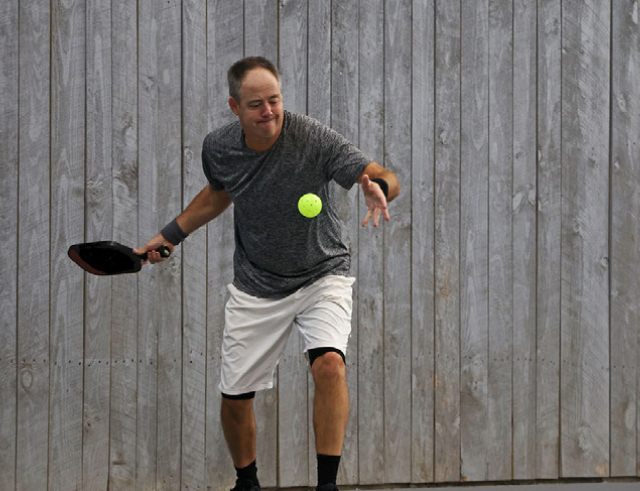Knowing when to switch sides is one of the most challenging concepts for new pickleball players to grasp. I’ve seen my fair share of confusion on the court when it comes to switching sides, but it gets better with time and practice.
From alternating serves to showing common courtesy when in rec play, this is your guide on when to switch sides when playing pickleball.
Do You Switch Sides In Pickleball?
Yes, you do switch sides in pickleball, but the frequency depends on a few factors. Singles and doubles games are played differently, along with recreational and competitive matches.
When Do You Switch Sides In Pickleball?
The most common methods for switching sides in pickleball are: alternating serves after each game (or after each player has served twice) or once a total of seven or eleven points are scored.
Alternating Serves
In competitive play, sides are switched every time the serving team scores a point, which means that the players will constantly be changing sides throughout the match–this is a horizontal shift that occurs on the side of the net you are on.

After Each Game (Or Two Serves)
Players typically switch sides after each game since, in pickleball, the sun, wind, and other environmental factors can significantly impact gameplay. By switching frequently, both teams spend an equal (or close to equal) amount of time at an advantage and disadvantage on either side. In this scenario, switching sides means going to the other side of the net and swapping with your opponents.
Every Seven Points
If you don’t want to wait for one team to reach eleven points, you can switch sides every seven points instead. This gives both teams a chance to play on each side of the court with more frequent switches, forcing players to adjust to different wind and sun conditions.
Changes in the wind and sun have a significant effect on the outcome of a pickleball game, making it almost impossible to play consistently on one side of the court.
Switching sides more frequently keeps the game exciting and helps to maintain a high level of play. It also guarantees more steps!
Common Courtesy
Regardless of the method you agree on before the game starts, it’s essential to practice good sportsmanship and show common courtesy to your opponents. This means that if the other team prefers to switch sides at a different time than you do, be willing to compromise and switch at their preferred interval.
Another way to show common pickleball courtesy to other players is to ensure you’re ready to play when it’s your turn to serve or return. Don’t waste time between points, and make sure to keep the game moving along.

If your opponents are struggling with the sun or wind on one side of the court, it’s good etiquette to switch sides more frequently to give them a chance to play on the better side.
Lastly, as I mentioned before, communication is key in pickleball. Be sure to communicate clearly with your partner and opponents throughout the game. Additionally, players may also switch sides during a game if they feel that the conditions have significantly changed and one side has become more favorable than the other. However, it’s important to note that the decision to switch sides during a game is usually made by mutual agreement between both teams.
All About Player Rotation
When you play doubles pickleball, you will also rotate with your teammate on the same side of the court. This section is not relevant for singles players, although they do switch sides with their opponents, as explained above. Switching sides with your partner gives you both the opportunity to play at the net and at the baseline. Here’s what you need to know about player rotation in pickleball:
The 2-2-2 Rotation
The most common method of player rotation in pickleball is the 2-2-2 rotation. With this method, each player takes turns serving for two points before switching sides with their partner.
For example, once your partner has served for two points, you’ll rotate positions from the net to the baseline and vice versa.
The 3-3 Rotation
The 3-3 rotation method is less common, but it’s a good option if one player on your team is stronger at serving or playing at the net. In this instance, one player serves for three points before switching sides with their partner. This rotation allows the stronger player to spend more time in the position where they excel.
Final Thoughts
Switching sides is an essential concept for all pickleball players to understand. Being able to differentiate between rotation methods will only improve your game.
Remember to practice good sportsmanship and show common courtesy to your opponents during gameplay.
With my tips in mind and lots of practice, you’ll eventually know the rules of switching in pickleball like the back of your hand.
